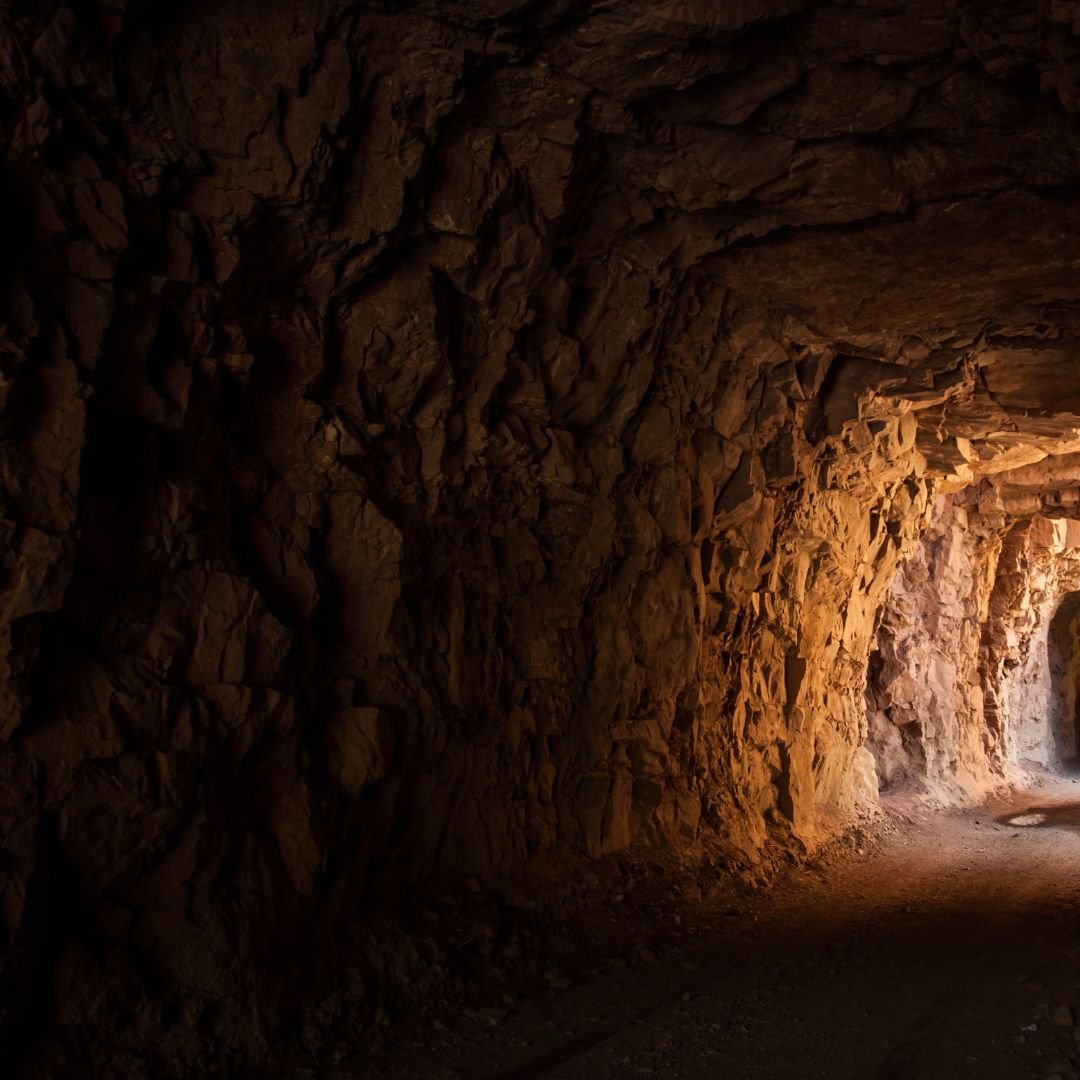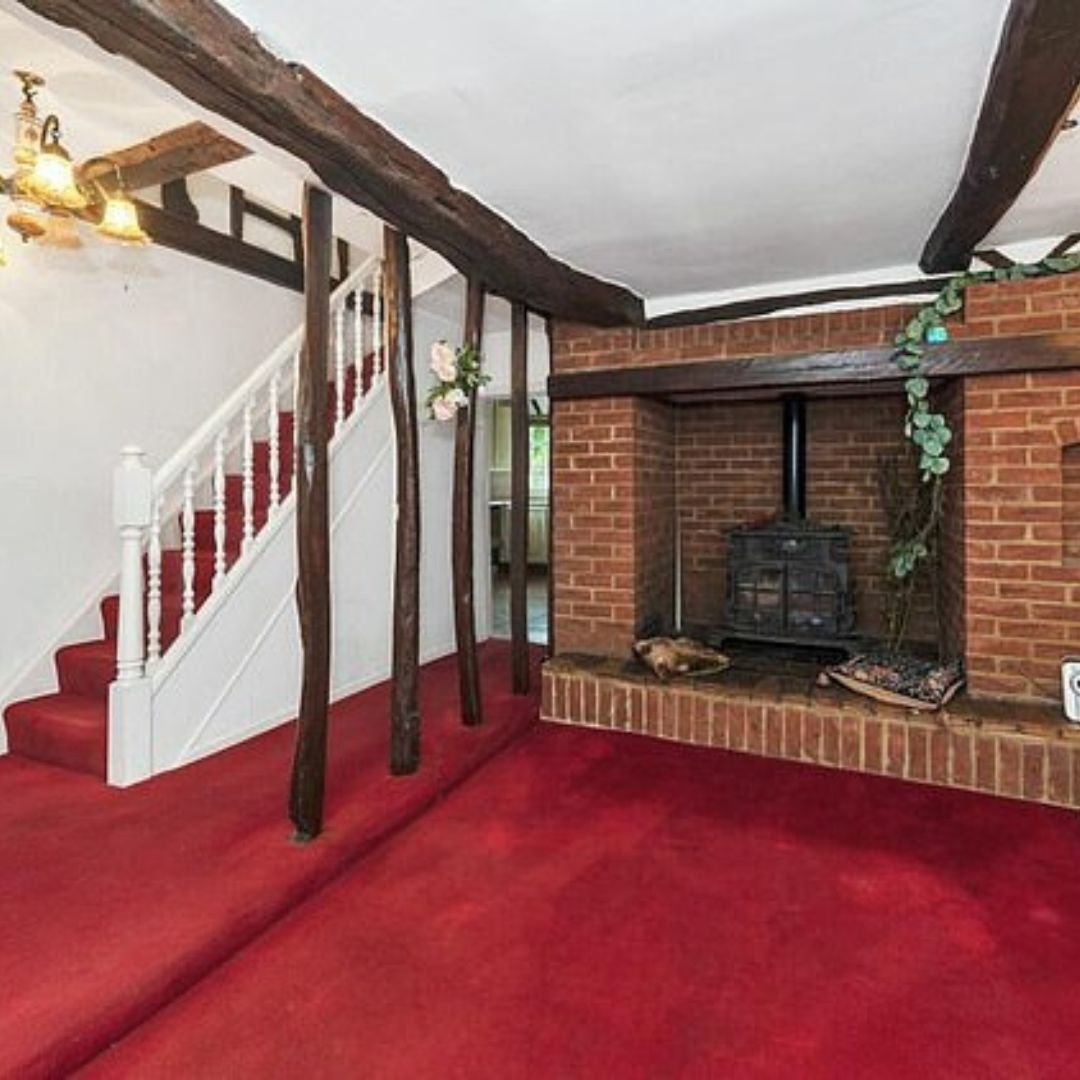This Grade II listed cottage in Cambridge has a secret tunnel connected to other properties.
The long and narrow tunnel, which has a small meeting room, was built when Henry VIII was King and it was used as an escape route, take a look

The long and narrow tunnel was built when Henry VIII created the Church of England.
It was most likely used by Catholics and Protestants as an escape route when the authorities visited – in order to avoid persecution.
The tunnel goes from Hill View Cottage and joins up with several other historic properties in the village, with a small central meeting room.

It is believed this could be the last remaining access to the tunnel, with others having been sealed off…
Steps lead from the kitchen to a good-sized basement, where you’ll find a trap door leading down to the vast underground tunnel.
Fast forward to the present day, and the tunnel remains remarkably intact.
Sure, it might sound like something out of a dream or horror film, but the four-bed property has lots of other desirable features as well as this particular quirk!
The unique property went on the market earlier this year for an asking price of £425,000.

Pictured above is the underground ‘meeting room’.
Access to the hidden room is via an old wooden door – this small space is connected to several other properties in the village.
We’re not sure how many people congregated in this room at one time.
But it would have been cold, dark and narrow to navigate through, but candles would have provided enough light.

This hidden tunnel wasn’t uncommon for its time, many old houses in Britain had secret tunnels, for different reasons.
Some for smuggling, some to go secretly to a lover whilst married, and some just had tunnels to avoid going out in cold or wet weather.
Many houses also had narrow passages behind the main rooms so that staff could come and go without disturbing the owners whilst cleaning or bringing food, these were not always obvious.
Secrets rooms were used likes safes are used nowadays, except they could also hide people wanted by police or whatever.
However, many old houses had nothing, because they had no need or the extra costs involved.

A representative from Ensum Brown, the estate agents behind this South Cambridgeshire cottage listing, says there’s been a high level of interest in this particular property.
‘While most properties get around 60 clicks a day on Rightmove, this one received over 10,000 in a single day at the weekend,’ they said.
In terms of the village itself, Fowlmere is one of the most southernmost spots in Cambridgeshire and found on the edge of Hertfordshire.
It’s also six miles from the town of Royston – which offers trains to King’s Cross in 38 minutes.
If you’d like to see a video of the tunnel, we have linked a YouTube video at the bottom of this article, which shows a time lapse walkthrough.

Back inside the property, there are four bedrooms and two reception rooms – from the front door, you enter immediately into the sitting room.
Looking past the sea of red carpet, there are lovely period features such as overhead beams and a woodburning stove in a brick fireplace that would adapt well in a renovation.
The rear enclosed garden is mainly laid to lawn with a paved area for seating.

Fowlmere is one of the southern most villages in Cambridgeshire, lying close to the Hertfordshire border.
Here you’ll find several village greens, a couple of playgrounds, a village hall with a tennis court, and a popular village pub.
Why did Catholics and Protestants need an escape route?

When Henry VIII instituted the break with Rome, he ushered in an era that would see Protestants and Catholics burn, starve, hang and hack each other to death in their thousands…
He killed Protestants who threatened the Roman Catholic air he breathed – that’s why it’s said that tunnels in homes were used to escape authorities.
Henry was an equal-opportunity persecutor.
Along with the Carthusians, at least 10 Dutch immigrants, religious radicals known as ‘anabaptists’, were burned in June 1535 – a signal of Henry’s religious ‘orthodoxy’.
The pattern repeated itself: in July 1540, three papalists and three Protestants were executed at Smithfield on the same day.

Henry VIII was King of England from 22 April 1509 until his death in 1547.
Henry is best known for his six marriages and his efforts to have his first marriage (to Catherine of Aragon) annulled.
His disagreement with Pope Clement VII about such an annulment led Henry to initiate the English Reformation, separating the Church of England from papal authority.
He appointed himself Supreme Head of Church of England and dissolved convents and monasteries, for which he was excommunicated by the pope.
Henry’s contemporaries considered him an attractive, educated and accomplished king.

He has been described as “one of the most charismatic rulers to sit on the English throne” and his reign described as the “most important” in English history.
If you’d like to watch a video of the long, narrow tunnels, click HERE.
Visit the Ensum Brown website, an award winning estate agent based in Cambridge, to find out more about this intriguing property.
If you enjoyed this blog post, please follow Exploring GB on Facebook for daily travel content and inspiration.
Don’t forget to check out our latest blog posts below!
Thank for you visiting Exploring GB.

